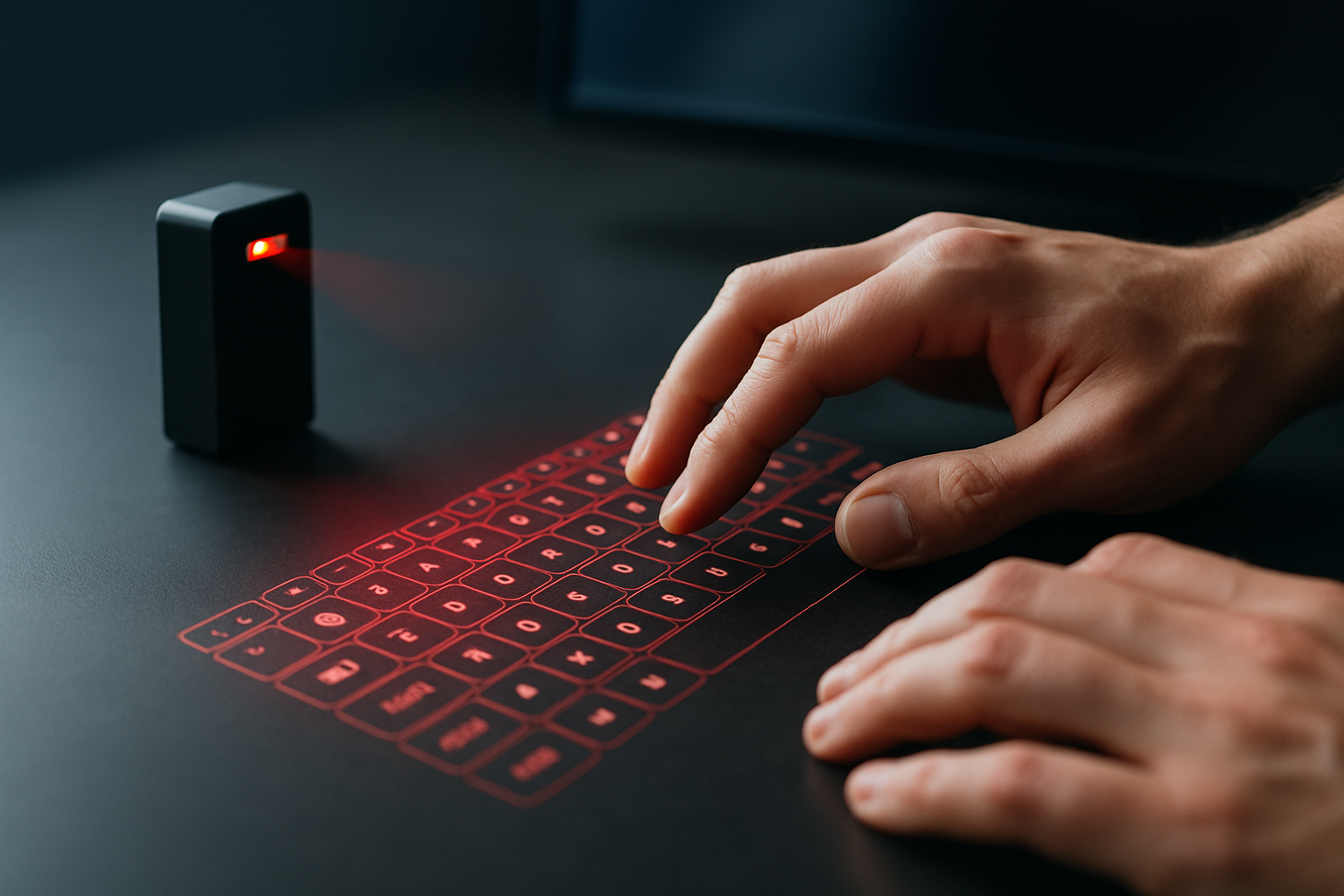Holographic Keyboards: The Next Frontier in Input Devices
In a world where technology continues to shrink and become more portable, holographic keyboards are emerging as a game-changing solution for those seeking a full-sized typing experience without the bulk. This cutting-edge input method projects a virtual keyboard onto any flat surface, allowing users to type as if they were using a physical keyboard. As we delve into this futuristic technology, we'll explore its potential to revolutionize how we interact with our devices and the challenges it must overcome to become mainstream.

The Evolution of Input Devices
From typewriters to touchscreens, the way we input information into our devices has undergone significant transformations. The QWERTY keyboard layout, developed in the 1870s, has remained a constant despite technological advancements. However, as devices became smaller and more portable, traditional keyboards began to pose limitations.
The introduction of touchscreen keyboards on smartphones and tablets offered a compromise between portability and functionality. Yet, many users still crave the tactile feedback and speed of physical keys, especially for longer typing sessions. This gap in the market has created an opportunity for holographic keyboards to potentially bridge the divide between compact devices and comfortable typing experiences.
How Holographic Keyboards Work
At their core, holographic keyboards use a combination of projection technology and infrared or camera-based motion tracking. A small projector casts the image of a keyboard onto a flat surface, while sensors detect the movement of the user’s fingers. When a finger “presses” a projected key, the system registers it as a keystroke.
The technology behind these keyboards has evolved significantly in recent years. Early prototypes struggled with accuracy and responsiveness, but newer models boast improved sensors and algorithms that can more precisely track finger movements. Some systems even incorporate haptic feedback through subtle vibrations or sound effects to simulate the feeling of pressing physical keys.
Advantages of Going Holographic
The most obvious benefit of holographic keyboards is their space-saving design. When not in use, the entire keyboard disappears, making it ideal for mobile devices or crowded workspaces. This feature also makes them highly adaptable; users can adjust the size and layout of the keyboard to suit their preferences or switch between different language layouts with ease.
Another advantage is hygiene. Unlike physical keyboards that accumulate dust and germs, holographic keyboards present a clean, touch-free alternative. This could be particularly appealing in shared workspaces or public terminals where sanitation is a concern.
Durability is yet another selling point. With no moving parts, holographic keyboards are less susceptible to wear and tear. They’re also impervious to spills and crumbs, common hazards that can spell doom for traditional keyboards.
Challenges and Limitations
Despite their potential, holographic keyboards face several hurdles before they can become a mainstream input device. The lack of tactile feedback remains a significant challenge. While some systems attempt to mimic the feel of physical keys through haptic feedback, it’s not yet comparable to the real thing. This absence of tactile response can lead to slower typing speeds and increased errors, especially for touch typists accustomed to feeling their way around a keyboard.
Lighting conditions also pose a challenge. Bright environments can wash out the projected image, making it difficult to see the keys. Conversely, using the keyboard in dark settings might strain the user’s eyes.
There’s also the question of surface compatibility. While holographic keyboards can work on most flat surfaces, textured or uneven surfaces can distort the projection and interfere with motion tracking. This limitation could restrict their usability in certain environments.
The Future of Holographic Input
As technology continues to advance, we can expect to see improvements in holographic keyboard design and functionality. Research into advanced haptic feedback systems could provide more realistic tactile sensations. Innovations in projection technology might allow for clearer, more visible keyboards even in challenging lighting conditions.
The potential applications extend beyond traditional computing. Holographic keyboards could be integrated into smart home systems, allowing users to control their devices from any surface in their house. In augmented reality environments, these keyboards could provide a seamless way to input text without breaking immersion.
Market Impact and Pricing
Currently, holographic keyboards remain a niche product, with prices ranging from $100 to $300 for consumer models. As the technology matures and production scales up, we can expect these prices to decrease. However, widespread adoption will likely depend on the technology’s ability to overcome its current limitations and offer a typing experience that rivals or surpasses traditional keyboards.
The market impact of holographic keyboards could be significant if they can successfully combine the portability of touchscreen inputs with the comfort and efficiency of physical keyboards. This could potentially disrupt the current keyboard market, valued at billions of dollars globally.
As we look to the future, holographic keyboards represent an exciting step towards more flexible and space-efficient computing. While they may not completely replace traditional keyboards in the near term, they offer a glimpse into a world where our input devices are as adaptable and dynamic as the technology they serve. As developers continue to refine this technology, we may find ourselves typing on thin air sooner than we think.





